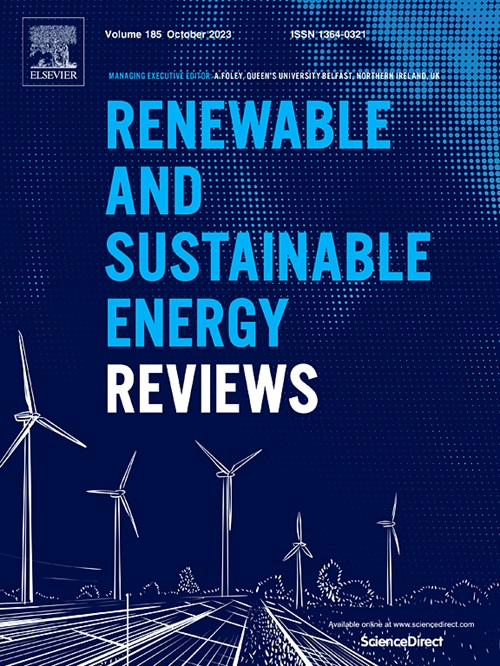Enhancing solar PV panel performance through active and passive cooling techniques: A comprehensive review
IF 16.3
1区 工程技术
Q1 ENERGY & FUELS
引用次数: 0
Abstract
Global energy demand has been on the rise due to the increasing population and industrialization. Due to fossil fuels’ contribution to greenhouse gas emissions, the world is undergoing a rapid transition to cleaner energy sources such as solar energy. The energy of the sun is predominantly converted into electrical energy using photovoltaics. However, elevated operating temperature is significantly affecting the PV conversion efficiency. To overcome this challenge, various PV cooling techniques have been developed, encompassing both passive methods and active methods. This work aims to compile a comprehensive review of these cooling techniques, focused on evaluating their effectiveness in PV temperature reduction and enhancement in PV efficiency. Key findings highlight the effectiveness of passive and active cooling methods in achieving an average PV temperature reduction of 15°C. Active air cooling achieved a maximum temperature reduction of 38°C in concentrated PV, while active liquid cooling achieved a maximum temperature reduction of 29°C in non-concentrated PV. Liquid immersion cooling yielded the highest electrical efficiency improvement of 16 %. The identified preference for CPV applications lies in passive heat pipe cooling, active air, and water cooling. Notably, in hot, dry climates, evaporative cooling outperforms air cooling, providing crucial insights for region-specific technology optimization. Liquid immersion emerges as the most suitable technique for hotspot reduction. This review aligns with UN SDG 7 by investigating cooling techniques to enhance solar PV panel efficiency and promote the widespread adoption of clean energy and by exploring strategies to optimize solar PV panel performance.

求助全文
约1分钟内获得全文
求助全文
来源期刊

Renewable and Sustainable Energy Reviews
工程技术-能源与燃料
CiteScore
31.20
自引率
5.70%
发文量
1055
审稿时长
62 days
期刊介绍:
The mission of Renewable and Sustainable Energy Reviews is to disseminate the most compelling and pertinent critical insights in renewable and sustainable energy, fostering collaboration among the research community, private sector, and policy and decision makers. The journal aims to exchange challenges, solutions, innovative concepts, and technologies, contributing to sustainable development, the transition to a low-carbon future, and the attainment of emissions targets outlined by the United Nations Framework Convention on Climate Change.
Renewable and Sustainable Energy Reviews publishes a diverse range of content, including review papers, original research, case studies, and analyses of new technologies, all featuring a substantial review component such as critique, comparison, or analysis. Introducing a distinctive paper type, Expert Insights, the journal presents commissioned mini-reviews authored by field leaders, addressing topics of significant interest. Case studies undergo consideration only if they showcase the work's applicability to other regions or contribute valuable insights to the broader field of renewable and sustainable energy. Notably, a bibliographic or literature review lacking critical analysis is deemed unsuitable for publication.
 求助内容:
求助内容: 应助结果提醒方式:
应助结果提醒方式:


